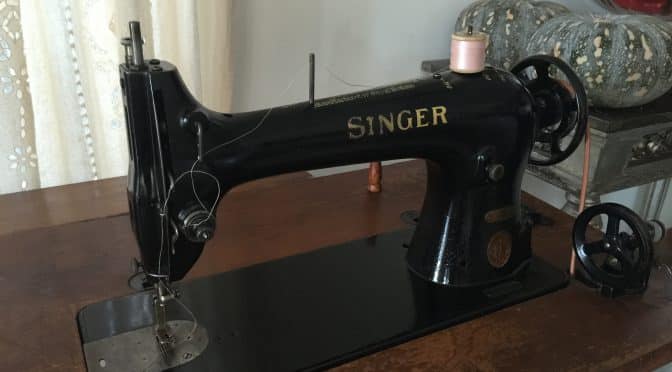Singer 31K20 Industrial 1937
Hello Dear Friends and readers. I mentioned this machine in the previous post. You can read how the story started here.
After our little side journey to the Repatriation General Hospital Museum, and having seen all the lovely memorabilia, it was established that they did not seem to have any more parts for the machine we had just looked at. So my daughter and myself wandered back to the little opportunity shop. The lady at the desk further explained that the sewing machine I was buying had come from the hospital museum. They had decided for various reasons that the machine was not the kind of item they wanted in the museum. So they had put it in to the Opportunity shop for sale!
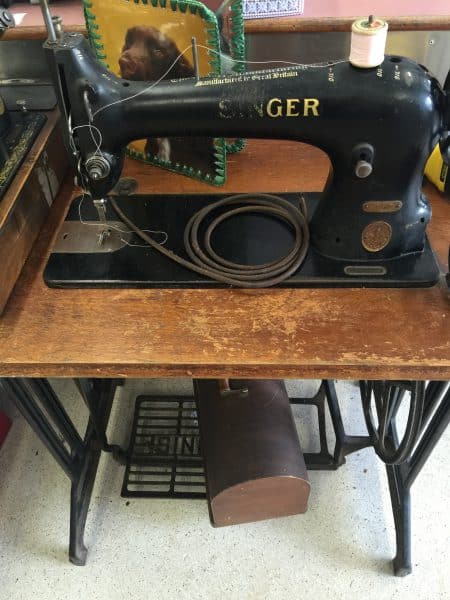
One gentleman referred to it as a canvas machine. I was trying to imagine what items would be made from canvass in a hospital. I was drawing a blank. Perhaps it was used to make the old-fashioned stretchers! However, I do know through personal experience, and prior to decentralisation, that most hospitals would have their own sewing room. This was indeed a place of considerable industry. Here was where all the nurses uniforms were made. They would have made the uniforms for other hospital personnel too. Also doctors coats and nurses capes and caps, along with a variety of purpose made positioning cushions, linen all kinds of mending repairs and any other items as may have directed by the Sisters in Charge or Matrons of the time.
So maybe this is a piece of hospital history after all…..
So getting back to the machine, the next question is of course, how was I going to get it home? I thought I could go home and get a screwdriver and at least undo the screws to remove the sewing machine head. That would reduce the size and weight considerably, as it is quite a lot bigger than a regular machine. Low and behold I looked at the hinges and they were no longer attached. By now we had a veritable throng of elderly ladies interested in how we were going to get this machine out. It was becoming quite comical! Then one of the ladies, I think she may have been close to eighty and bearing a strong Scottish accent insisted that she would help us lift it into the car. She was a powerful lady in body, mind and spirit! So between the gathering force of ladies and with considerable hilarity going on, I lifted out the machine head and took it to the car. I opened the back of the car and then the three of us managed to get the heavy sewing machine frame and table, into the back of the car with the Scottish lady merrily singing about “Donald Where’s yer Troosers”.
It really was hilarious!
Having got the machine home, now comes the fun part of getting it cleaned up and hopefully sewing.
I checked on the ISMICS site for the date checking. https://ismacs.net/singer_sewing_machine_company/serial-numbers/singer-eb-series-serial-numbers.html
I did notice in the shop that oddly, the bobbin case was absent, and the was just a lonely bobbin in the spot where the bobbin case should be.
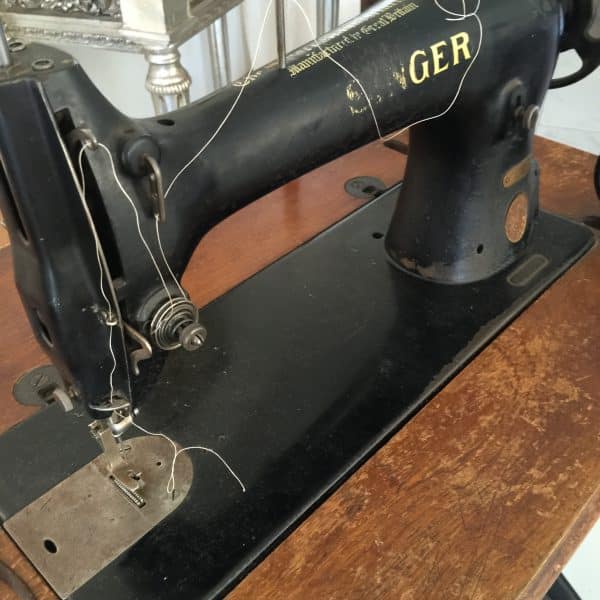
It really is quite a beast. The face plate and rear access plate are both black.
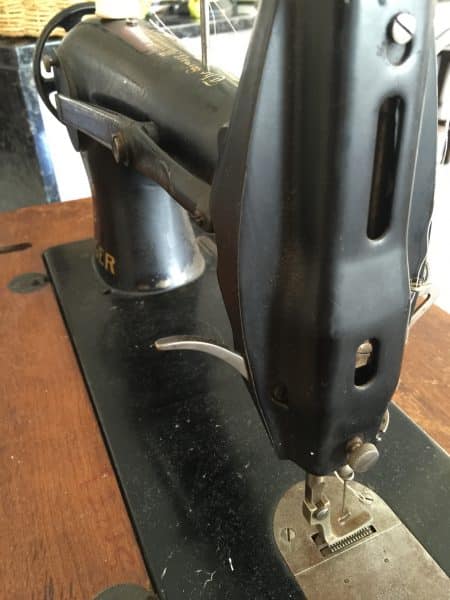
I began in the usual manner of cleaning all the years of greasy dust.
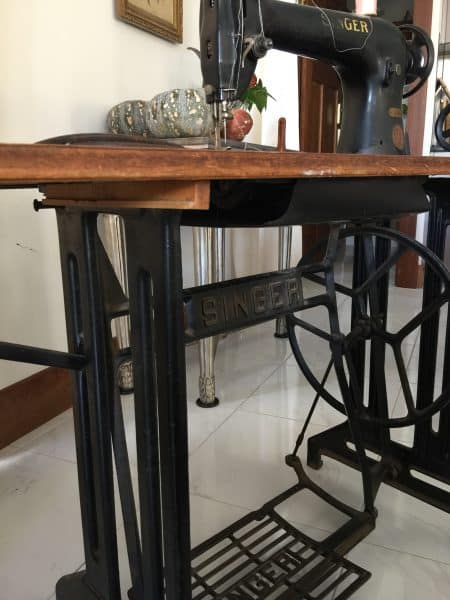
Followed by a good oiling and polishing of the machine and irons with Sewing Machine oil.
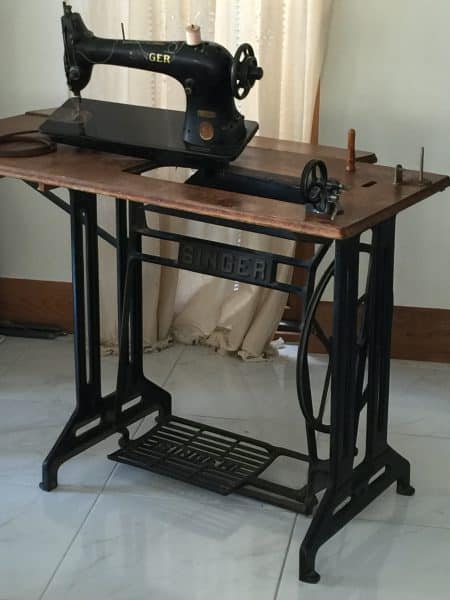
I used Linseed oil to clean up the timber. It does a good job of rehydrating, evening out the colour and sealing the timber surfaces.
Here is a rear view. It shows the extra numbering on the back and how the extension leaves look when they are out.
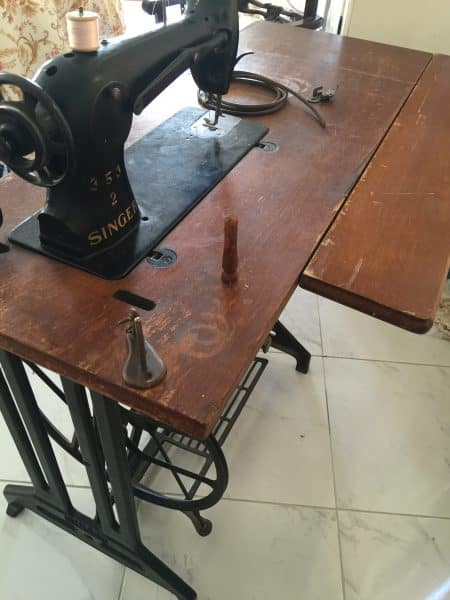
After the machine has been cleaned. I’ve purchased a new belt, as that was perished. All parts are running as smooth as silk. I’ve been told it will not be difficult to purchase a new bobbin case as they are still available for industrial machines.
Incidentally, just to get an idea of the size, here it is pictured with an antique White Peerless 3/4 hand crank machine.
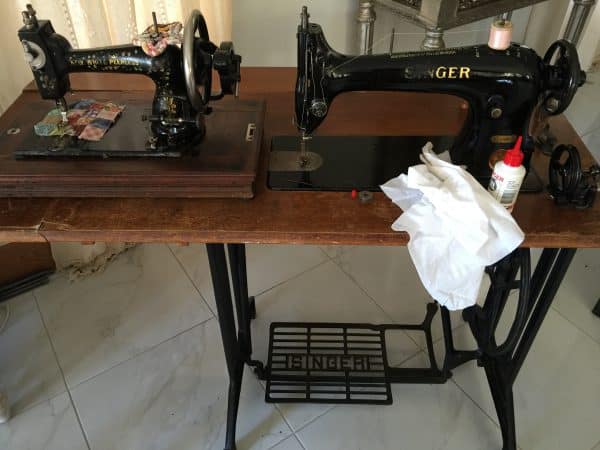
I’m looking forward to seeing how this machine operates and enjoying the large throat space. This is how she looks after the clean up! It really is a Black Beauty!
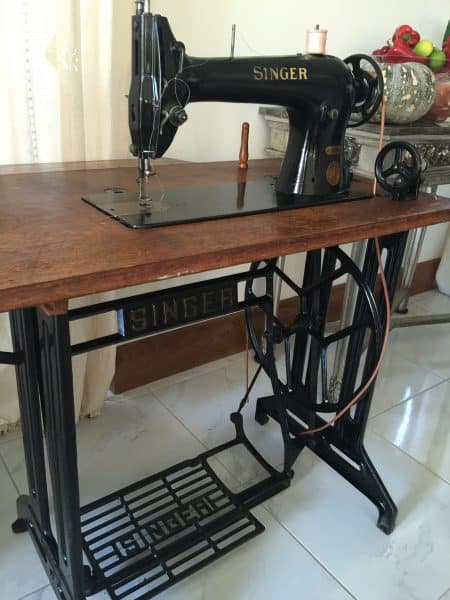
Thank you to all the contributors from Vintage Sewing Machine and Treadle Quilter’s for their advice prior to purchase!
If you enjoyed this post, you may also like
Make Your Singer Sing (Part 1)
New White Peerless Antique Sewing Machine
Antique White USA Treadle Base
Happy treadling.
Susie
© Susan Stuklis 2016

